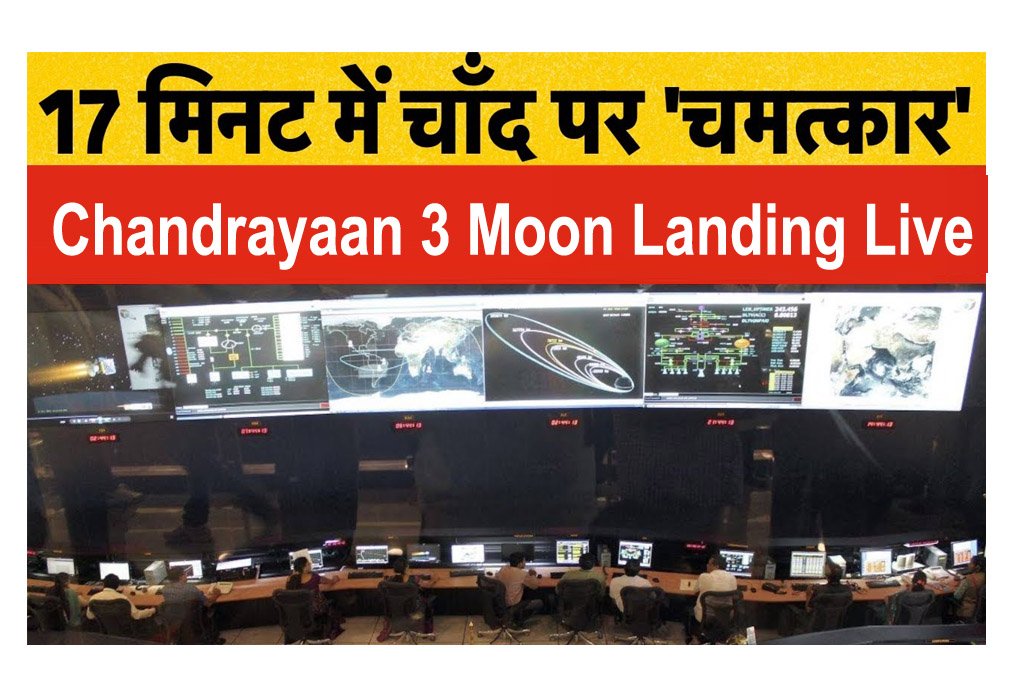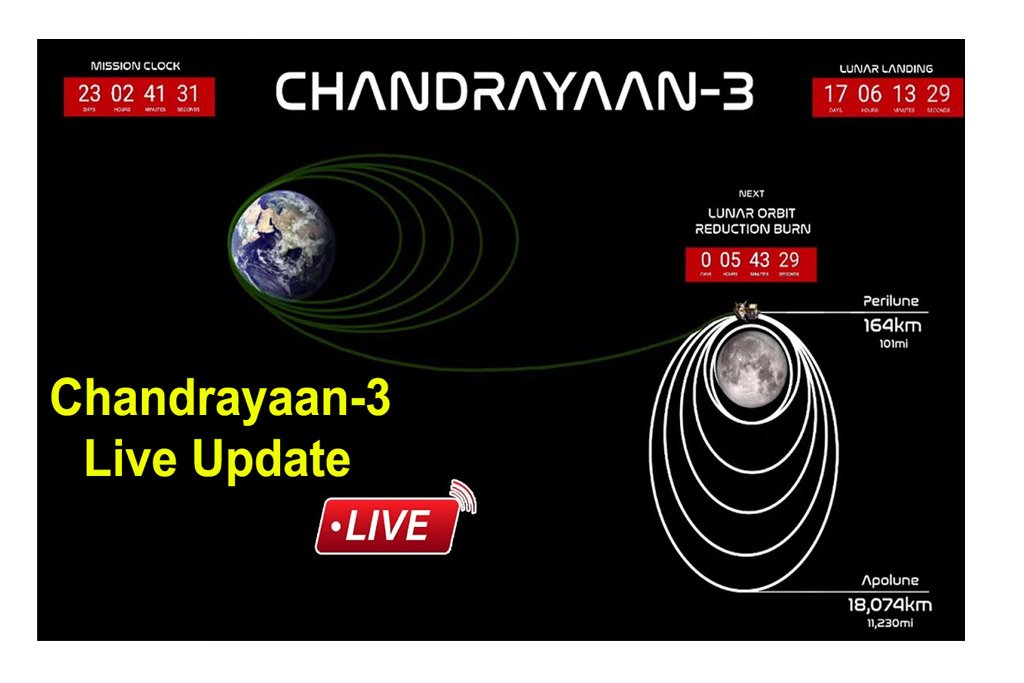Chandrayaan 3 Moon Landing Live :- चंद्रयान 3 भारत का तीसरा चंद्र अन्वेषण मिशन है, जिसे भारतीय अंतरिक्ष अनुसंधान संगठन (इसरो) द्वारा लॉन्च किया गया है। मिशन चंद्रमा के दक्षिणी ध्रुवीय क्षेत्र पर एक लैंडर और रोवर को उतारने का प्रयास करेगा। चंद्रयान-3 को 14 जुलाई 2023 को लॉन्च किया गया था और लैंडर और रोवर को 23 अगस्त 2023 को लॉन्च किए जाने की उम्मीद है।
चंद्रयान 3 का उद्देश्य चंद्रमा के दक्षिणी ध्रुवीय क्षेत्र का पता लगाना है, जो पानी की संभावनाओं के लिए महत्वपूर्ण है। इस क्षेत्र में चट्टानों और धूल के नमूने एकत्र किए जाएंगे और चंद्रमा की सतह के 3डी मानचित्र तैयार किए जाएंगे। चंद्रयान 3 का मिशन भारत को चंद्रमा पर स्थायी मानव उपस्थिति के लिए तैयार करने में भी मदद करेगा।
चंद्रयान-3 का लैंडर ‘विक्रम’ है और रोवर ‘प्रज्ञान’ है। विक्रम लैंडर चंद्रमा की सतह पर सुरक्षित रूप से उतरेगा और रोवर प्रज्ञान चंद्रमा की सतह पर 2.7 किमी तक यात्रा करेगा। रोवर चंद्रमा की सतह का पता लगाएगा और चट्टानों और धूल के नमूने एकत्र करेगा।
चंद्रयान 3 की लॉन्चिंग और लैंडिंग एक कठिन कार्य है। इस मिशन के लिए इसरो ने अत्याधुनिक तकनीक का इस्तेमाल किया है। चंद्रयान-3 की सफलता भारत को अंतरिक्ष अन्वेषण के क्षेत्र में एक बड़ी शक्ति के रूप में स्थापित करेगी। Chandrayaan 3 Moon Landing Live
| Organization | Indian Space and Research Organization |
| Mission | Chandrayan–3 |
| Purpose of Mission | To Collect Scientific Date of Moon Surface, Chemical Composition of Soil and other minerals |
| Components | Propulsion Module, Lander and Rover |
| Mission Duration | Propulsion Module has Duration of 14-15 Days |
| Chandrayaan 3 Launch Date | 14th July 2023 |
| Chandrayaan 3 Landing Time | DD National TV from 06:04 PM. (Indian Standard Time) |
| Landing Date | 23 August 2023 |
| Location of Landing | South Pole of Moon |
| Budget of Chandrayaan 3 | ₹615 Crore |
| Type of Article | Chandrayaan 3 Moon Landing |
| ISRO Website | isro.gov.in |
Chandrayaan 3 Landing:-
The countdown for Chandrayaan-3’s soft landing on the Moon has begun. On July 14, Chandrayaan-3 was launched from the Satish Dhawan Space Center in Sriharikota, Andhra Pradesh, and now the wait is just 6.4 minutes on Wednesday (August 23, 2023) evening. Chandrayaan-3 will study on the Moon by staying for 14 days on the Earth (equal to one day on the Moon). Chandrayaan-3 was launched in 2019, four years after the failure of Chandrayaan-2. Keeping in mind the failures of the previous mission, special changes were made in it, and today ISRO has spoken about its successful landing with full confidence. For the first time, a country will land a spacecraft on the south pole of the Moon. Because of this, scientists from all over the world are gazing at India’s mission Moon. Let’s know the answers to the important questions related to Chandrayaan-

Chandrayaan 3 Live Tracker :-
According to the report, the configuration of the lander and rover has been carefully checked several times to ensure smooth functioning. The Mark-III (LVM3) vehicle is ready for launch with all required specifications. The moment everyone has been eagerly waiting for is traveling in space. If you have not seen the demonstration video, it is available on ISRO’s official website. A Chandrayaan 3 launch video will also be released, documenting its departure towards the Moon. The video will be streamed from the Satish Dhawan Space Center in Sriharikota, AP and operated remotely. Keep scrolling to find out more about this important news.
As per reports, September 2019 was a difficult time for many, as it marked the failure of Chandrayaan 2. This was especially disappointing for a team that had devoted their maximum effort to the project. However, now, the rocket has been readied for the final launch. It has been deployed at the launch site, from where it will embark on its journey to the Moon. If we get any more details, we assure you that you’ll be the first to hear it here. Stay tuned for more updates.

What is the objective of ISRO’s moon mission?
- Chandrayaan will measure the near-surface plasma (ion and electron) density of the Moon.
- It will also measure the thermal properties of the Moon’s surface near the polar region.
- Chandrayaan-3 will also measure seismicity around the landing site and image the composition of the lunar crust.
- This vehicle will also study the soil of the Moon.






